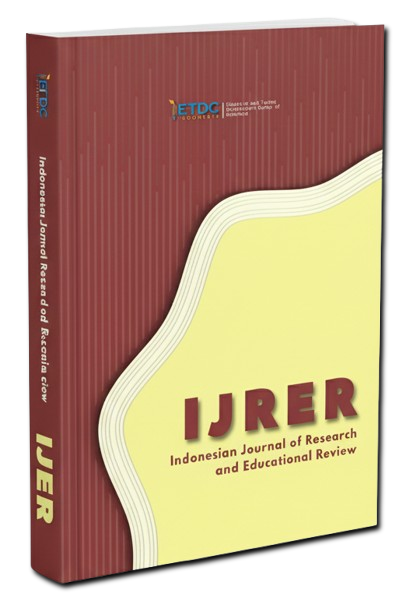The Urgency of Islamic Religious Education in Instilling the Practice of Salat Among at Elementary Students: Education and Da’wah Perspective
https://doi.org/10.51574/ijrer.v3i3.2705
Keywords:
Islamic Religious Education Salat Practice Teacher Guidance Pedagogical Approach Student LearningAbstract
This article investigates the process of Islamic Religious Education (PAI) at UPTD SD Negeri 181 Bulete, Pitumpanua Subdistrict, Wajo Regency, with a focus on the students' practice of Salat and the efforts of teachers in guiding its implementation. Using a qualitative approach with pedagogical, religious, and psychological perspectives, the study analyzes primary and secondary data through interviews, observations, documentation, and questionnaires. The findings reveal that the implementation of PAI involves three key components: preparation, which includes curriculum and lesson planning; the learning process, which focuses on the teacher’s ability to explain, the use of methods, and learning media; and evaluation, including feedback, tasks, and grades. The study also shows that the practice of Salat among students is still in the learning stage, with some students accustomed to it due to guidance from teachers and parents. Teachers play a vital role in this process by providing advice, being role models, and offering motivation. This study underscores the importance of Islamic Religious Education in shaping students' religious practices, particularly in the context of Salat, and highlights the significant role of teachers in this guidance.
References
Abrari, M. N. (2002). Salat berjama’ah: Panduan hukum, adab, hikmah, sunnah, dan peringatan penting tentang pelaksanaan salat berjamaah. Pustaka Arafah.
Arikunto, S. (2010). Prosedur penelitian: Suatu pendekatan praktik. Rineka Cipta.
Black, P., & Wiliam, D. (1998). Inside the black box: Raising standards through classroom assessment. Phi Delta Kappan.
Bloom, B. S. (1956). Taxonomy of educational objectives: The classification of educational goals. Longman.
Carroll, J. B. (1963). A model of school learning. Teachers College Record.
Dale, E. (1946). Audio-visual methods in teaching. Dryden Press.
Hasbullah. (2006). Dasar-dasar ilmu pendidikan (Revised ed.). Raja Grafindo Persada.
Kolb, D. A. (1984). Experiential learning: Experience as the source of learning and development. Prentice-Hall.
Moleong, L. J. (2000). Metodologi penelitian kualitatif. Remaja Rosdakarya.
Salam, M. (2015). Pendidikan agama Islam di sekolah dasar. Kencana.
Stufflebeam, D. L. (1971). The CIPP model for program evaluation.
Subandi, S. (2003). Pendekatan kualitatif dalam penelitian pendidikan agama. Pustaka Pelajar.
Sugiyono, S. (2009). Metode penelitian kuantitatif, kualitatif, dan R&D. Alfabeta.
Tomlinson, C. A. (2001). How to differentiate instruction in mixed-ability classrooms. ASCD.
Tyler, R. W. (1949). Basic principles of curriculum and instruction. University of Chicago Press.
Usman, B. (2002). Metodologi pembelajaran agama Islam. Ciputat Pers.
Vygotsky, L. S. (1978). Mind in society: The development of higher psychological processes. Harvard University Press.
Downloads
Published
How to Cite
Issue
Section
License
Copyright (c) 2025 ETDC: Indonesian Journal of Research and Educational Review

This work is licensed under a Creative Commons Attribution-ShareAlike 4.0 International License.


























